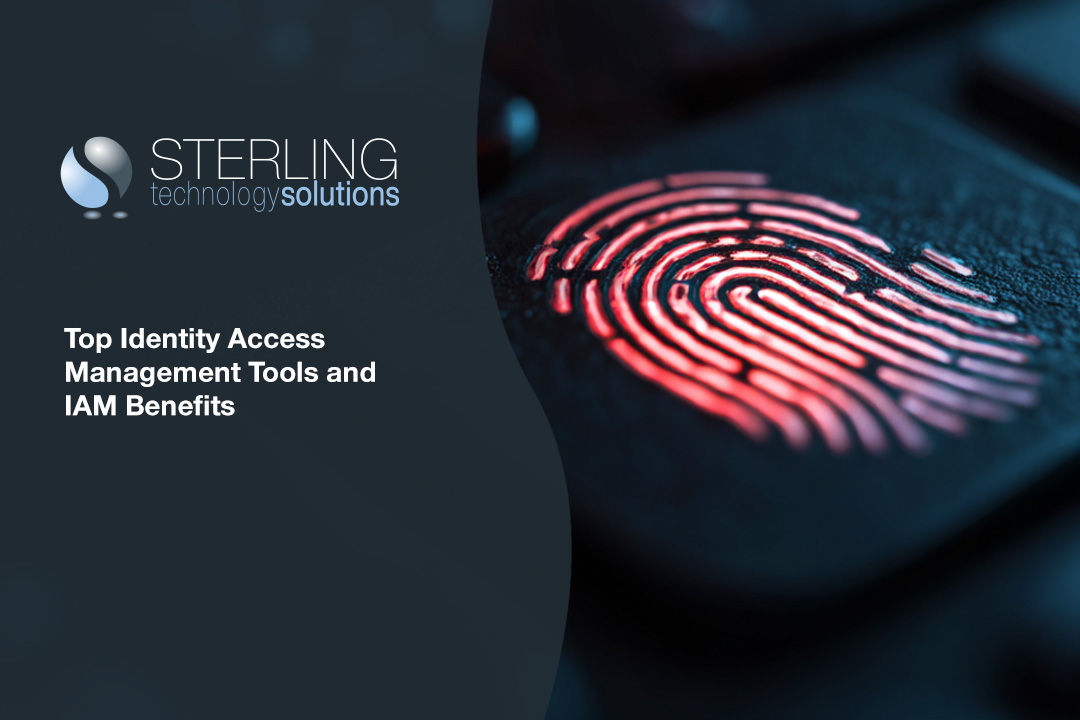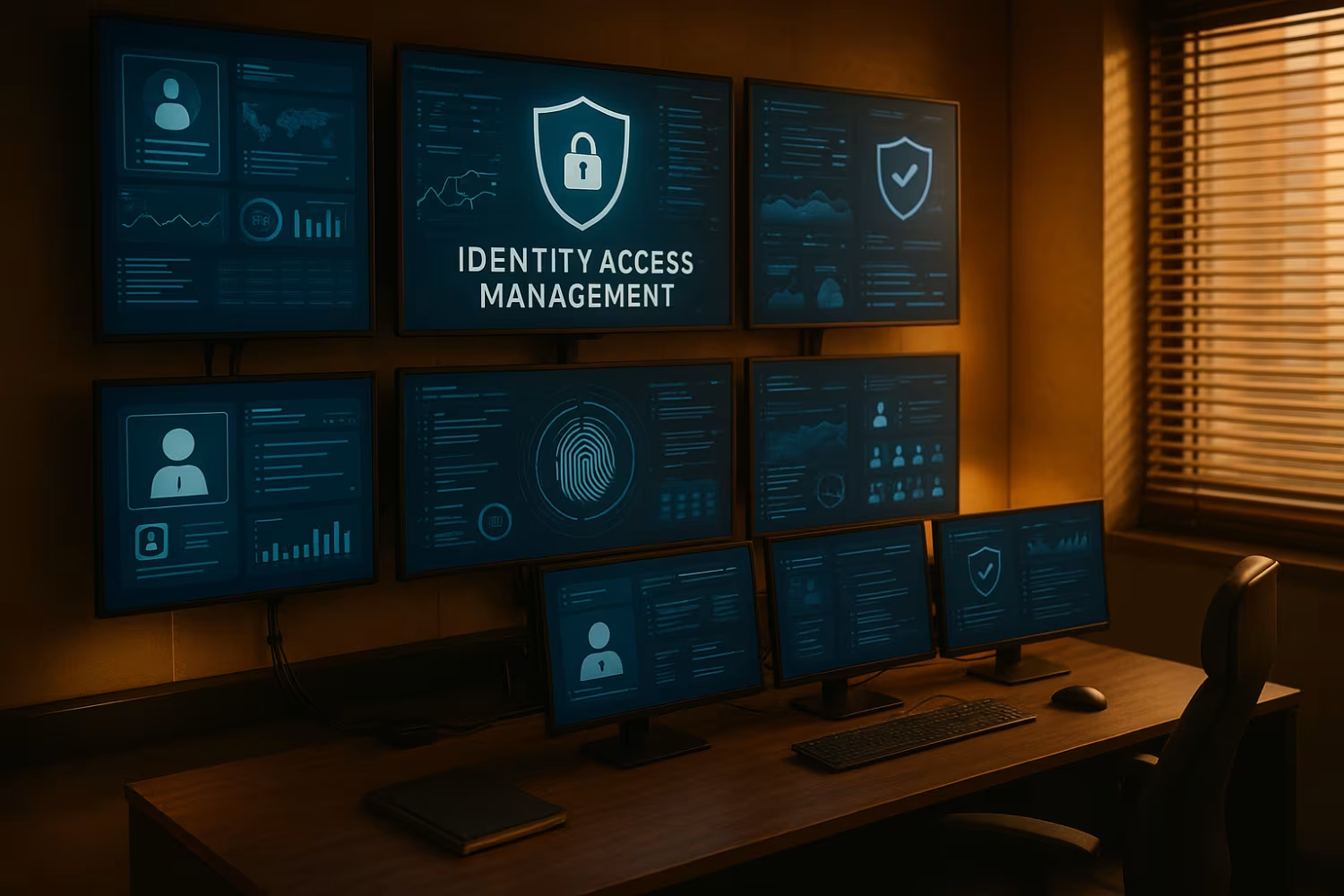Top Identity Access Management Tools and IAM Benefits
October 8, 2025

Managing digital identities and controlling access to sensitive systems is more than just a security task—it's a business necessity. Identity access management (IAM) helps protect your data, streamline user access, and ensure only the right people get into the right systems. In this blog, you'll learn what IAM is, how it works, common mistakes to avoid, key benefits, and how to implement it effectively.
We'll also cover IAM tools, role-based access control, and how IAM supports your overall security posture. Whether you're managing user identities or setting up secure access, this guide will help you make informed decisions.
What is identity access management?
Identity access management is the process of managing who has access to what in your IT environment. It combines identity verification with access control to make sure users only reach the systems and data they’re authorized to use. IAM systems help businesses manage user access across multiple platforms, applications, and devices.
IAM is especially important for businesses that handle sensitive data or rely on cloud services. It helps reduce the risk of unauthorized access, data breaches, and compliance violations. IAM solutions often include features like multi-factor authentication, single sign-on, and role-based access control.
IAM tools also make it easier to manage access rights as employees join, move within, or leave your company. This is critical for maintaining secure access and protecting digital identities across your organization.

6 common mistakes to avoid when using IAM
Even with the best intentions, IAM can go wrong if not handled carefully. Here are six common mistakes businesses make and how to avoid them.
Mistake #1: Not defining clear access policies
Without clear rules for who can access what, IAM systems become confusing and risky. You need to define access levels based on job roles and responsibilities. This helps prevent unauthorized access and simplifies audits.
Mistake #2: Ignoring privileged access
Privileged accounts have more control and access than regular users. If these accounts aren’t properly managed, they become high-risk targets. Use IAM security solutions to monitor and limit privileged access.
Mistake #3: Delaying deactivation of former employees
When someone leaves your company, their access should be removed immediately. Delays can lead to security risks. Automating this process through your IAM system helps reduce human error.
Mistake #4: Overcomplicating the login process
If users find it hard to log in, they may find workarounds that weaken security. IAM tools should balance security with ease of use, like offering single sign-on or multi-factor authentication.
Mistake #5: Not auditing access regularly
Access needs change over time. Regular audits help ensure users still need the access they have. This keeps your IAM solution clean and secure.
Mistake #6: Failing to integrate IAM with other systems
IAM works best when it connects with your HR, IT, and cloud systems. Integration helps automate user provisioning and improves your overall management system.
Key benefits of identity access management
IAM offers several advantages for growing businesses:
- Reduces the risk of data breaches by enforcing secure access policies
- Improves user experience with simplified login and access to resources
- Supports compliance with industry regulations and audit requirements
- Automates user provisioning and deactivation to save time
- Enhances visibility into who has access to what systems
- Strengthens your identity security by protecting digital identities

How IAM supports compliance and security
IAM plays a major role in helping businesses meet compliance standards. Regulations like HIPAA, GDPR, and others require strict control over access to sensitive data. IAM systems help enforce these controls through access logs, user authentication, and role-based access.
IAM also strengthens your overall security posture. By managing user identities and controlling access rights, you reduce the chance of internal and external threats. IAM security solutions help detect unusual login behavior and alert you to potential security risks.
IAM technologies that improve your security
Modern IAM systems include a range of technologies that work together to protect your business. Here are some of the most effective ones.
Technology #1: Multi-factor authentication (MFA)
MFA requires users to verify their identity using more than one method, like a password and a mobile code. This adds an extra layer of protection against unauthorized access.
Technology #2: Single sign-on (SSO)
SSO lets users log in once to access multiple systems. It reduces password fatigue and improves security by limiting the number of credentials users need to manage.
Technology #3: Role-based access control
RBAC assigns access based on job roles. This makes it easier to manage access rights and ensures users only see what they need.
Technology #4: Identity federation
Federation allows users to access systems across different organizations using one identity. It’s useful for businesses that work with partners or contractors.
Technology #5: Behavioral analytics
IAM tools with behavioral analytics can detect unusual user activity, like logging in from a new location. This helps identify potential threats early.
Technology #6: Cloud-based IAM solutions
Cloud IAM systems offer flexibility and scalability. They’re ideal for businesses using cloud applications and remote teams.

How to implement IAM effectively
Start by identifying all the systems and data users need access to. Then, define roles and access levels for each type of user. Choose an IAM solution that fits your current needs but can also grow with your business.
Make sure your IAM system integrates with your existing IT infrastructure. Train your team on how to use IAM tools and monitor access regularly. Finally, review and update your IAM policies as your business evolves.
Best practices for managing IAM
Follow these tips to get the most from your IAM system:
- Set up clear policies for user access and identity management
- Use automation to manage user provisioning and deactivation
- Monitor privileged access accounts closely
- Integrate IAM with HR and IT systems for better efficiency
- Conduct regular audits to review access rights
- Keep IAM tools updated to address new security risks
Following these practices helps ensure your IAM system stays secure and effective.

How Sterling can help with identity access management
Are you a business with 20 to 80 employees looking for a better way to manage user access? If you're growing and need to secure digital identities without slowing down your team, we can help.
At Sterling, we specialize in IAM security solutions that fit your size and goals. We’ll help you choose the right IAM tools, implement them properly, and keep your systems secure. Contact us today to get started.
Frequently asked questions
What is IAM and how does it work?
IAM stands for identity and access management. It works by verifying user identities and controlling their access to systems and data. IAM tools help automate login processes and manage access rights.
By using IAM, businesses can ensure secure access to resources, protect digital identities, and reduce the risk of unauthorized access. It’s a key part of any strong security posture.
Why is identity management important for small businesses?
Identity management helps small businesses control who can access what systems. It ensures that only the right people have access to sensitive data.
Managing user identities also helps reduce security risks and supports compliance with regulations. It’s especially important as your team grows and more people need access to your systems.
How does access control improve security?
Access control limits what users can do based on their roles. It prevents unauthorized users from reaching sensitive systems or data.
By setting clear access rights and using IAM tools, businesses can manage access more effectively. This reduces the risk of data breaches and insider threats.
What are the benefits of using IAM tools?
IAM tools automate user provisioning, simplify login, and improve access control. They help businesses save time and reduce human error.
These tools also support secure access, monitor user activity, and help enforce compliance. They’re essential for managing digital identities and protecting identity information.
How do I choose the right IAM system?
Look for an IAM system that fits your business size and IT setup. It should support role-based access control, integrate with your existing tools, and offer secure login options.
Also consider features like multi-factor authentication and identity provider support. A good IAM solution should grow with your business and adapt to new security risks.
What is AWS Identity and Access Management?
AWS Identity and Access Management (IAM) is a service that helps control access to AWS resources. It lets you create and manage user identities and permissions.
Using AWS IAM, you can define who can access what in your cloud environment. It’s a key part of managing access to resources and maintaining cloud security.



